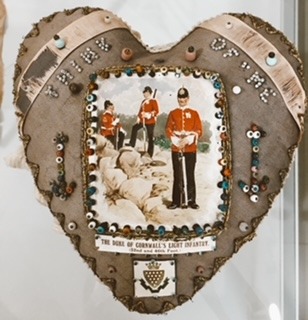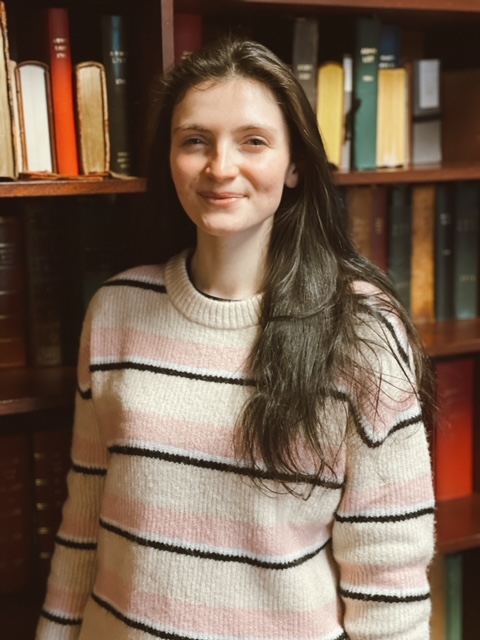One of the objects that first caught my attention at Bodmin Keep was the colourful pin cushion on display in the World War One gallery. How could a pad for storing pins relate to the men who fought in the First World War?

I soon learnt that this pin cushion was created by a recovering soldier as a form of craft therapy.
In the early 1900s, Post-traumatic stress disorder (PTSD), or ‘shell shock’ as it was known, was not well understood. The suffering men were often accused of being cowards, of ‘failing to be men’. This traditional view of mental health was difficult to shake, but our pin cushion is an early example of changing attitudes.
Recovering soldiers were provided with several craft materials and were encouraged to take part in embroidery, beadwork, woodwork, and in creating pin cushions. The pin cushion-creating kits contained pins, beads, ribbons, and a representation of the soldier’s regiment. These artistic tasks were a good distraction from war; they offered a way to channel trauma by providing a focus.
Unfortunately, we do not have much contextual information about our pin cushion to be able to name its creator. But we can get some insight into his emotions by looking at the decoration. Pin cushions were personal creations and many soldiers stitched messages onto them. Our soldier chose the words “think of me” suggesting that this cushion was going to be sent home to a sweetheart, wife, mother, or family member as a token of love and memory.
Some soldiers chose to include photographs of themselves or their loved ones. Our soldier included a picture of his regiment– the Duke of Cornwall’s Light Infantry. This picture is a traditional and idealised depiction of the regiment, far from the reality of war. Soldiers in the First World War wore khaki uniforms and not red coats like the men in the picture. So, why did the soldier choose this representation of his regiment?
The original picture comes from a postcard and it is likely that it was provided to the soldier in the pin cushion-creating kit. Perhaps our soldier did not have his own photographs or did not want to part with them. Perhaps seeing the powerful depiction of his regiment was a source of pride, a tribute to his fellow fighters.
Another interesting feature are the anchor elements to either side of the picture, did this soldier have naval ties?
There are many questions that we cannot answer, but this pin cushion is a strong reminder that we need to care for our mental health. It is also an interesting example of countering two common gender expectations:
- that men had to be hardy masters of their own emotions.
- that embroidery and needlework activities were ‘feminine’ tasks.
Today veteran mental health charities support the use of occupational therapy involving sewing, painting, and sculpting. But we need to continue to fight mental health stigma which can prevent people, men in particular, from getting help.
Written by Isabella Hogan, Trainee Curator at Bodmin Keep

